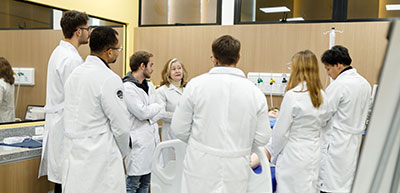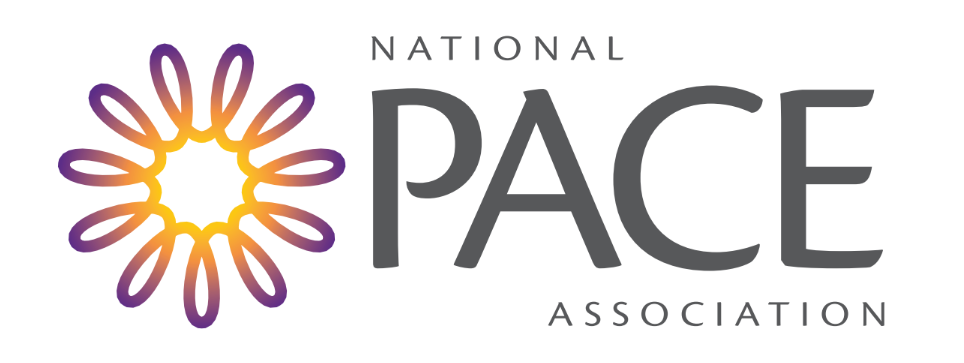PACE Organizations Bring Students on Board

Programs of All-Inclusive Care for the Elderly (PACE) around the country are partnering with local institutions to provide educational opportunities in medicine, nursing, physical therapy, dietetics, social work and more. Learners gain firsthand knowledge of the PACE model of care and how professionals in their field work within it. Opening their doors for education is as beneficial for the PACE organizations as it is for the learners and may yield even greater benefits in the long-term.
When higher education institutions are looking to address needs in the areas of primary care or geriatric education, they reach out to local PACE programs, said David Heisig, MD, FACP, medical director at PACE CNY in North Syracuse, NY. Residents from St. Joseph’s Health in Syracuse, NY and medical students at Lake Erie College of Osteopathic Medicine in Erie, Pennsylvania do rotations at PACE CNY.
PACE organizations should be proactive and establish connections with local geriatric fellowship or medical residency programs, said Karen Nichols, MD, chief medical officer at Trinity Health PACE, in Livonia, Michigan, which collaborates with the geriatric fellowship program at the University of Pennsylvania in Philadelphia.
The first step is to determine the specific educational needs of the school, she said. Having a conversation with the course director whose students will be involved helps to identify who will be coming to the PACE center, the center staff that will assist the students, and where they will be placed.
PACE organizations may not be able to fulfill every need of the educational institution. For example, Dr. Nichols recounted conversations with a nursing school looking for intensive behavioral health instructional opportunities. The behavioral health services offered by the closest PACE site did not meet the desired criteria.
Partnerships between educational institutions and PACE programs yield many benefits, such as learners getting to see an innovative care model in action that is increasingly recognized as a standout in integrated care.
“It’s very helpful for residents and students who are still largely institutional-based to go out and recognize that PACE participants have a huge part of their life that doesn’t involve the hospital,” said Dr. Heisig, noting that the opportunity to learn in an environment like PACE would have greatly improved his own medical education.
A dialogue with learners helps keep PACE providers sharp, he said. “A good pupil will ask a question, and a good mentor should have a reasonable answer. That forces teachers to keep up with things, to do their reading, and to be energized and engaged. That’s critical.”
Providers sometimes can be frazzled by their daily workload. Having students come in can have a calming effect, he said. “Even though it’s a bit more work, it’s enjoyable to explain things, and there’s collegiality. The student or resident can be sent to do an important task that relieves the provider of that duty.”
Dr. Nichols also has observed learners taking on duties that otherwise would be part of providers’ responsibilities, such as nursing students providing immunizations to participants.
“We referred to them as the ‘roving immunizers’ because they would go in and out of the day rooms in the center, talking with participants and administering their flu shot, which was one less thing the clinic nurses had to worry about,” she said.
While not every provider is interested in mentoring, “the vast majority enjoy it, learn from it, and are proud of their accomplishments in that realm,” said Dr. Heisig.
Preceptor training can alleviate the concerns of potential mentors about connecting with learners, said Dr. Nichols. In addition, conducting surveys to capture perspectives on educational efforts can help to ensure that providers and learners get the most out of their experience.
Before engaging in educational partnerships, PACE organizations should do their research upfront and consider the administrative load of starting and managing a program for learners. Dr. Nichols cited as a helpful resource an article titled “Aligning Geriatric Medicine Fellowships with the Program of All-Inclusive Care for the Elderly (PACE)” published in 2021 in Gerontology & Geriatrics Education, Volume 42, Issue 1.
Another resource is the presentation she gave on PACE programs serving as learning sites during the recent NPA Virtual Winter Conference. The presentation, titled “PACE: A Center for Geriatric Education,” is available to conference registrants on demand until March 22. Registration for the conference closes on March 15.
Last year, the National PACE Association (NPA) convened a Clinical Rotation Workgroup with the objective of promoting PACE as a setting for clinical rotations. The workgroup identified three primary areas to guide its work:
- curriculum development for PACE learners,
- development of clinical rotation resources, and
- the development of a clinical rotation recruitment and retention strategy.
Formalizing educational pathways for PACE could result in a pipeline to hiring, said Dr. Nichols, a member of the workgroup.
Having learners in PACE is “a positive experience for all,” said Dr. Heisig. “It benefits the providers, the PACE organization and the learners.”
